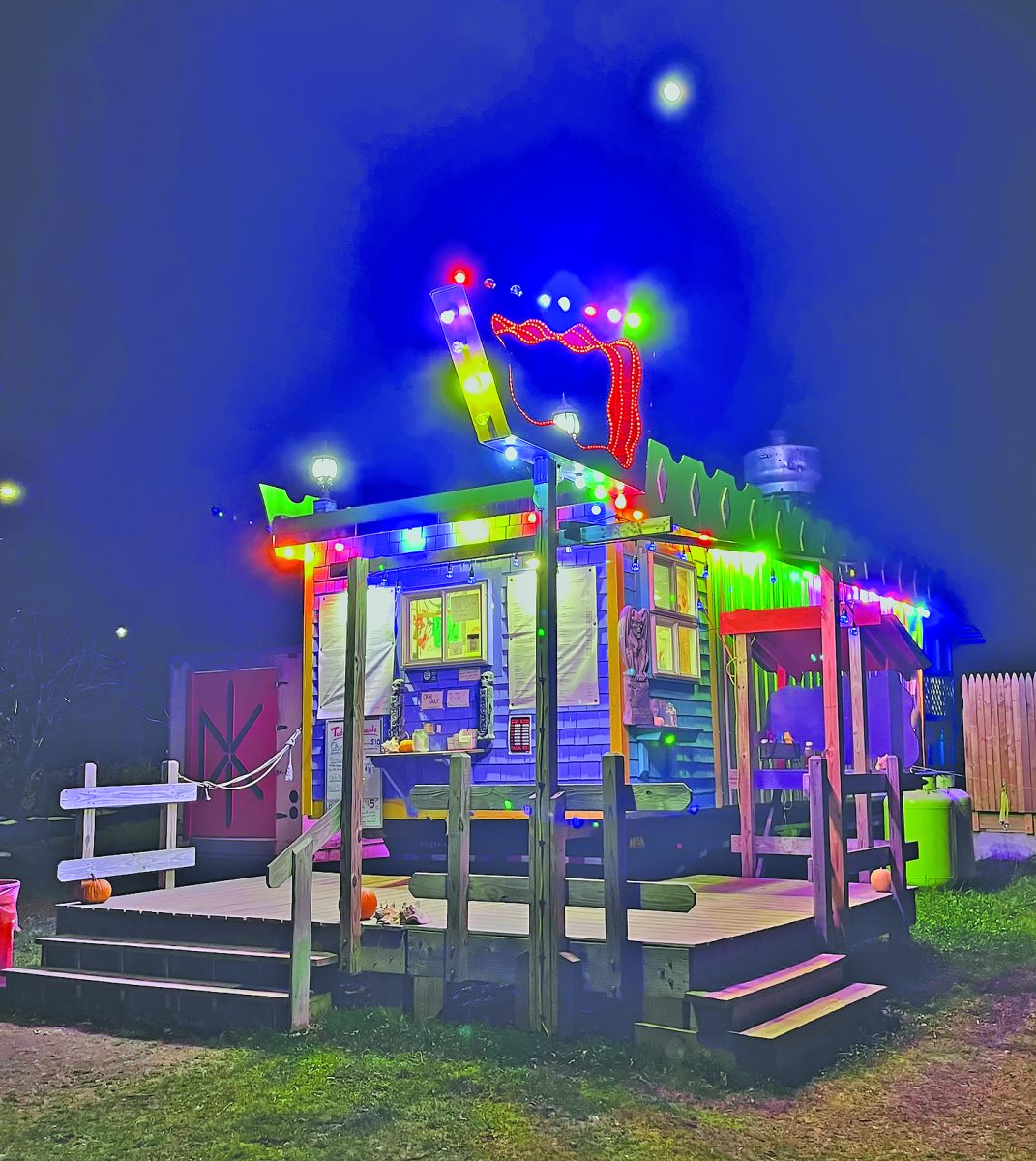What could ordinary civilians do in the face of a disaster such as the flooding caused by Tropical Storm Irene in 2011? That is the conundrum that Vermont’s Community Emergency Response Team came to Johnson State College to solve.
On Jan. 26 and 27, CERT members Fred Messer and Carla Straight-Messer held all-morning seminars on emergency planning and training at the Stearns Stage Space. The eleven participants who arrived on Saturday, Jan. 26 were a disparate group, varying widely in age and motivations, from those there to learn more for Break Away trips, to those simply wanting to be better prepared.
The first impression one might get of Fred and Carla is of a modest-looking, middle-aged married couple. Judging by appearances alone, Carla’s bob cut and rounded face do not look traditionally heroic, though Fred’s combination of graying mutton chops and moustache do, a bit.
In their plain, button-down shirts they appear almost bland, but appearances can deceive. These two, it turns out, have stories.
Though he does not dwell on it, Fred has a strong military background. “I served 32 years in the Vermont Army National Guard,” Fred said in a matter-of-fact manner. “Twenty years was full-time, and I retired in ’02. Soon afterwards, I started working in emergency management.”
Carla, who works with Vermont’s Disaster Animal Response Team, discussed with students rescuing trapped pets and livestock. “[She] pretty much started [DART] here in the state of Vermont,” said Fred. “There pretty much wasn’t much of a DART program until Carla came along. Carla was actually one of the students in one of my first classes. We co-teach; Carla can bring a lot of things to the table.”
The Community Emergency Response Team (CERT) program is a nation-wide effort to create “second response” teams capable of backing up firefighters and other first-responders when their resources are overtaxed. The Federal Emergency Management Agency, Emergency Management Institute, and National Fire Academy currently back all official CERT groups.
At their seminars, Fred and Carla teach subjects such as triage management, search and rescue operations, safety hazard awareness, and basic firefighting, all of which are skills that can help people protect their community. Fred described the training as “how we reorganize ourselves to help out in a totally chaotic situation.”
Fred and Carla handed out Field Operating Guides. CERT’s guides use simple, literal terminology to describe emergency situations, foregoing the more familiar, and more confusing, 10-codes used by law enforcement. The problem with the old 10-codes is they are not standard between states, not counting the famous 10-4 okay signal. CERT teams also keep military time when at a disaster site, with every hour after 12 p.m. being described as thirteen, fourteen, and so on up to twenty-four. “There’s only one ten-o’-clock in 24 hours,” said Fred. “And often disasters last longer than 12 hours.”
“It’s okay to count on your fingers,” Carla joked. “I sometimes do.” Everybody laughed as they flipped through their new textbooks and counted in military time in their heads.
Because CERT teams are meant to be civilian backup they do not have the sophisticated equipment that first-responders do. “CERT is not very well resourced,” said Fred. “We have to make-do with what we’ve got. We’re never going to get the Jaws of Life or anything like that, but we might get a crowbar.” Because of this, part of the seminar was on how to construct a homemade emergency supply kit with the usual: emergency ponchos, flashlights, non-perishable food, dust masks, large wrenches, caution tape, and other tools for taking charge and fixing problems.
CERT response team members are trained to use their bodies and minds as tools even when equipment is not available. These teams search buildings for survivors, and triage them into groups based on the extent of their injuries. Carla, though clearly smaller than any of the other women, made it look easy when she demonstrated a basic chair-lift-carry, designed for those survivors who are too injured to walk. She also noted that scanning a room for holes and falling debris is as important to do as it is easy to forget.
On Sunday Fred and Carla began by talking about supplies, tools and gear. Trying to show how important it is to plan ahead, Carla described a camping trip with Fred many years before that had gone wrong quickly due to a lack of proper planning. They had diligently packed matches into a waterproof jar only to discover later, at the most crucial moment of course, that those particular matches were safety matches that require a striker rather than being strike-anywhere matches. Whatever stress it might have caused her when it happened, Carla could now talk about it with a laugh.
The training also included ways for the participants to clean up their community. The most memorable example was a neighborhood watch effort in San Antonio which had an issue with highly visible drug dealers. Their simple solution was for neighborhood watch members to patrol on foot while talking on cell phones near the dealers. That’s it. The implied threat of being caught, alone, was enough to drive off the drug dealers.
Sunday’s seminar ended with a basic firefighting training course led by Carla. The Los Angeles City Fire Department created the first official Community Emergency Response team in 1985. Students paired-up, with one student using a fire extinguisher, the other ready to assist in case the first became incapacitated. These teams took turns extinguishing a diesel-fueled “burn barrel” in the Visual Arts Center parking lot, while the waiting audience did their best to avoid the white smoke punctuating an otherwise skin-piercingly cold and clear afternoon. Fred seemed almost unaffected by the biting January wind, though approaching the fire to re-light the barrel probably helped him warm-up.
This two-day seminar was the basic introduction course and included encouragement to seek out further training. “Some folks come to the basic CERT training expecting that we’re going to do some CPR, and the basic first-aid and all that kind of stuff,” said Carla. “Those are actually follow-on trainings that you’ll take when you join your team, or if you organize one here on campus.”
Many of the students at the JSC seminar were there getting more involved in their community. Others were there because of a Break Away trip. All who attended are now better equipped to deal with danger. As Fred said, “This is an excellent opportunity for people to put in as much time, or as little time, as they want to help out their community.”




